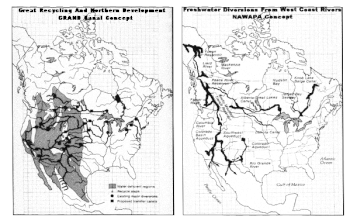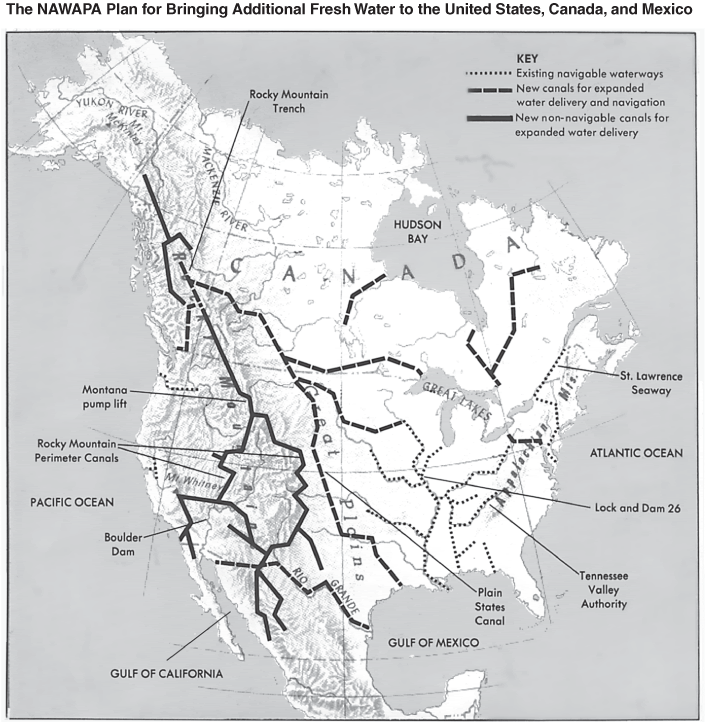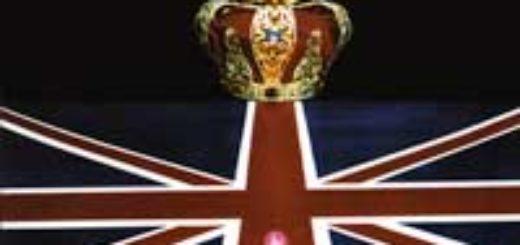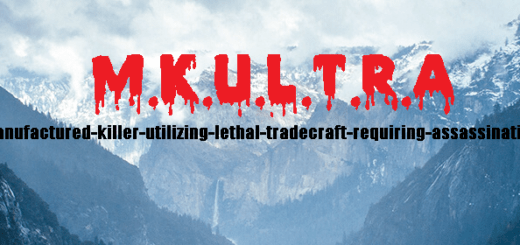Lake Oroville is Drying Out. Too Bad Kennedy’s NAWAPA Project Was NEVER Implemented By Our Politicians. (No Need to Worry About Crumbling Oroville Dam-There Soon Will Not Be Enough Water to Pose Any Threat!)

Leonard Dixon
Lake Oroville, CA. The first photo is from 3 years ago. The 2nd photo was taken April 27 2021. The 3rd was taken last week.

The North American Water and Power Alliance (NAWPA or NAWAPA, also referred to as NAWAPTA from proposed governing body the North American Water and Power Treaty Authority) was a proposed continental water management scheme conceived in the 1950s by the US Army Corps of Engineers. The planners envisioned diverting water from some rivers in Alaska south through Canada via the Rocky Mountain Trench and other routes to the US and would involve 369 separate construction projects. The water would enter the US in northern Montana. There it would be diverted to the headwaters of rivers such as the Colorado River and the Yellowstone River. Implementation of NAWAPA has not been seriously considered since the 1970s, due to the array of environmental, economic and diplomatic issues raised by the proposal.[1][2] Western historian William deBuys wrote that “NAWAPA died a victim of its own grandiosity.”[2]
The plan[edit]
A technical and economic blueprint for the plan was developed in 1964 by the Parsons Corporation of Pasadena, California.[3] The total cost was estimated in 1975 as $100 billion, comparable in cost to the Interstate Highway System.[4][5]
Water management[edit]
The Parsons plan would divert water from the Yukon, Liard and Peace River systems into the southern half of the Rocky Mountain Trench which would be dammed into a massive, 500 mi (805 km)-long reservoir. Some of the water would be sent east across central Canada to form a navigable waterway connecting Alberta to the Great Lakes with the additional benefit of stabilizing the Great Lakes’ water level. The rest of the water would enter the United States in northern Montana, providing additional flow to the Columbia and Missouri–Mississippi river systems, and would be pumped over the Rocky Mountains via the Sawtooth Lifts in Idaho. From there, it would run south via aqueducts to the Colorado River and Rio Grande systems. Some of this water would be sent around the southern end of the Rockies in New Mexico and pumped north to the High Plains, stabilizing the Ogallala Aquifer. The increased flow of the Colorado River, meanwhile, would enter Mexico, allowing for greater development of agriculture in Baja California and Sonora.[1][6]
The project would provide 75 million acre-feet (93 km3) of water to water-deficient areas in the North American continent,[7] including Canada and the United States, as well as irrigation water for Mexico, which Parsons claimed would receive enough water to reclaim 7 or 8 times more land than Egypt reclaimed with the Aswan High Dam.[8] It would provide increased water flow in the upper Missouri and Mississippi rivers during periods of low flow, increased hydropower generation along the Columbia River, and stabilize water levels in the Great Lakes.[9] Parsons originally proposed using peaceful nuclear explosions to excavate trenches and underground water storage reservoirs for the system.[10]
Power generation[edit]
The project would generate a vast amount of electricity from a number of hydroelectric and nuclear power facilities (the latter of which would be required to power the multiple pumping stations needed to move the water across the continent).[1] The issue of electricity generation created some controversy, with some commentators such as Marc Reisner arguing that the plan would be a net consumer of energy, while others estimated a net gain of 60 to 80 million kilowatts after meeting the needs for pumping.[7]
Transportation[edit]
The plan would potentially have included a navigable waterway in Canada from Alberta to Lake Superior, to be called the Transcontinental Canal. In addition to increasing availability of water, the canal would address problems of water pollution.[7]
Reception[edit]
NAWAPA garnered early support from some Western political figures, who viewed its promise of increased water supplies as key to continued growth in the Western United States. In 1966, Congressman Jim Wright, in his book, The Coming Water Famine, wrote that “NAWAPA has an almost limitless potential if we possess the courage and the foresight to grasp it.”[11] In 1967, Senator Frank Moss of Utah wrote The Water Crisis, in which he called NAWAPA the most comprehensive water diversion proposal to solve supply and pollution problems.[12] (Moss was later hired by the Parsons Corporation and retained as a lobbyist.[1]) Los Angeles County Supervisor Mike Antonovich called for Los Angeles to back the plan. The Corps of Engineers studied this project in the 1950s and 1960s, but no official proposal was ever developed.[1] Canadian Prime Minister Lester Pearson was quoted in 1966 saying of the plan that “This can be one of the most important developments in our history.”[13]
In the 1970s, the plan began to encounter fierce opposition by a number of different groups on both sides of the border, based on concerns with its financial and environmental costs and the international implications of exporting Canadian water. The environmental movement, which viewed the plan as the “hydrologic anti-Christ,”[14] gained momentum in the early 1970s, and is credited with playing a major role in halting the project.[2][15] After initially expressing support for NAWAPA as Interior Secretary in the 1960s, Stewart Udall publicly ridiculed the plan after leaving office.[1][16] The project was opposed by public sentiment in Canada,[1] though Canadian financier Simon Reisman, who negotiated the Free Trade Agreement, the precursor to the North American Free Trade Agreement, was one of its backers and main promoters. Nonetheless, the Canadian position on free trade exempted water exports, in part specifically to pre-empt any attempted completion of Reisman’s long-time pet project.[citation needed] The NAWAPA Foundation, which Parsons had founded to promote the scheme, closed its doors in 1990.[17]
Environmental writer Marc Reisner noted in Cadillac Desert that the plan was one of “brutal magnificence” and “unprecedented destructiveness.”[1] Historian Ted Steinberg suggested that NAWAPA summed up “the sheer arrogance and imperial ambitions of the modern hydraulic West” and credited rising costs and the rise of the environmental movement with killing the idea.[15] One author called it “the most outlandish water development scheme to emerge in the past 50 years”[18]
Beginning in 1982, some efforts were made to revive the plan, including by Parsons engineer Roland Kelley, who authored a report called NAWAPA Plan Can Work.[19] The LaRouche movement has supported the project, making efforts to revive NAWAPA in 1982 and again in 2010.[2][20]
See also[edit]
- Great Recycling and Northern Development Canal
- International Joint Commission
- Boundary Waters Treaty of 1909
- Columbia River Treaty
- North American Union
- Cadillac Desert
- South–North Water Transfer Project of China
- Northern river reversal
References[edit]
- ^ Jump up to:a b c d e f g h i j k l Reisner, Marc. Cadillac Desert revised edition, 1993
- ^ Jump up to:a b c d deBuys, William, A Great Aridness:Climate Change and the Future of the American Southwest, Oxford University Press 2011, p. 329
- ^ Captured Rain: America’s Thirst for Canadian Water, Canadian Broadcasting Corporation, 2000
- ^ Barr, L. (1975). NAWAPA: A Continental Water Development Scheme for North America? Geography 60(2), pp.111-119.
- ^ Nelson, J.G. and Chambers, M.J., Water, Methuen Publications 1969, p.375
- ^ Holm, Wendy (1988). Water and Free Trade: The Mulroney Government’s Agenda for Canada’s Most Precious Resource. James Lorimer & Company. pp. 31. ISBN 1-55028-166-6.
- ^ Jump up to:a b c Engelbert, Ernest A, and Scheuring, Ann Foley, Water Scarcity: Impacts on Western Agriculture, Berkeley, University of California Press 1984, p. 113
- ^ Ebeling, Walter, Fruited Plain: The Story of American Agriculture , Univ of California Press (February 1980), p. 319
- ^ Nelson, J.G. and Chambers, M.J., Water, Methuen Publications 1969, p. 371
- ^ Forest, B. & Forest, P. (2012). Engineering the North American waterscape: The high modernist mapping of continental water transfer project. Political Geography 31, pp. 167-183.
- Wright, Jim, The Coming Water Famine, Coward-McCann (1966), p. 222.
- ^ Moss, Frank, The Water Crisis, F. A. Praeger 1967, p. 245.
- ^ Congressional Record, Volume 112, Part 5 – Page 6474
- ^ Annin, Peter, The Great Lakes Water Wars, Island Press 2006, p. 58
- ^ Jump up to:a b Steinberg, T. (2002). Down to Earth: Nature’s role in American history.
- ^ McCool, Daniel, Command of the waters : iron triangles, federal water development, and Indian water, University of Arizona Press, 1994. p. 108
- ^ Guide to North American Water and Power Alliance Records, Archives Center, National Museum of American History
- ^ Landry, C., Payne, M. & Root, S. (2012). Grandiose water development plans. Water Resources Impact 14(2). p. 18.
- ^ “Kelly, Roland P., NAWAPA Plan Can Work, Energy Report, National Energy Research and Information Institute, La Verne, California, June/July 1982.
- ^ Welsh, Francis J., How to Create a Water Crisis, Johnson Books 1985, p. 213
WORLD
How Gaddafi`s Great Man-Made River Project became part of the Water Wars

Libyans called it the eighth wonder of the world. Western media called it a pet project and the pipe dream of a mad dog. The “mad dog” himself in 1991 prophetically said about the largest civil engineering venture in the world:
After this achievement, American threats against Libya will double. The United States will make excuses, but the real reason is to stop this achievement, to keep the people of Libya oppressed.
Gaddafi’s dream
It was Muammar Gaddafi’s dream to provide fresh water for all Libyans and to make Libya self-sufficient in food production. In 1953, the search for new oilfields in the deserts of southern Libya led to the discovery not just of significant oil reserves, but also of vast quantities of fresh water trapped in the underlying strata. The four ancient water aquifers that were discovered, each had estimated capacities ranging between 4,800 and 20,000 cubic kilometers. Most of this water was collected between 38,000 and 14,000 years ago, though some pockets are believed to be only 7,000 years old.
After Gaddafi and the Free Unitary Officers seized power in a bloodless coup from the corrupt King Idris during the Al-Fateh Revolution in 1969, the Jamahiriya government nationalized the oil companies and spent much of the oil revenues to harness the supply of fresh water from the desert aquifers by putting in hundreds of bore wells. Large farms were established in southern Libya to encourage the people to move to the desert. It turned out that the majority of the people however preferred life in the northern coastal areas.
Therefore Gaddafi subsequently conceived a plan to bring the water to the people instead. The Libyan Jamahiriya government conducted the initial feasibility studies in 1974, and in 1983 the Great Man-Made River Authority was set up. This fully government funded project was designed in five phases, each of them largely separate in itself, but which eventually would combine to form an integrated system. As water in Gaddafi’s Libya was regarded to be a human right, there has not been any charge on the people, nor were any international loans needed for the almost $30 billion cost of the project.
In 1996, during the opening of Phase II of the Great Man-Made River Project, Gaddafi said:
This is the biggest answer to America and all the evil forces who accuse us of being concerned with terrorism. We are only concerned with peace and progress. America is against life and progress; it pushes the world toward darkness.
Development and destruction
At the time of the NATO-led war against Libya in 2011, three phases of the Great Man-Made River Project were completed. The first and largest phase, providing two million cubic metres of water a day along a 1,200 km pipeline to Benghazi and Sirte, was formally inaugurated in August 1991. Phase II includes the delivery of one million cubic metres of water a day to the western coastal belt and also supplies Tripoli. Phase III provides the planned expansion of the existing Phase I system, and supplies Tobruk and the coast from a new wellfield.
The ‘rivers’ are a 4000-kilometer network of 4 meters diameter lined concrete pipes, buried below the desert sands to prevent evaporation. There are 1300 wells, 500,000 sections of pipe, 3700 kilometers of haul roads, and 250 million cubic meters of excavation. All material for the project was locally manufactured. Large reservoirs provide storage, and pumping stations control the flow into the cities.
The last two phases of the project should involve extending the distribution network together. When completed, the irrigation water from the Great Man-Made River would enable about 155,000 hectares of land to be cultivated. Or, as Gaddafi defined, the project would make the desert as green as the flag of the Libyan Jamahiriya.
In 1999, UNESCO accepted Libya’s offer to fund the Great Man-Made River International Water Prize, an award that rewards remarkable scientific research work on water usage in arid areas.
Many foreign nationals worked in Libya on the Great Man-Made River Project for decades. But after the start of NATO’s so-called humanitarian bombing of the North-African country in March 2011, most foreign workers have returned home. In July 2011, NATO not only bombed the Great Man-Made River water supply pipeline near Brega, but also destroyed the factory that produces the pipes to repair it, claiming in justification that it was used as “a military storage facility” and that “rockets were launched from there”. Six of the facility’s security guards were killed in the NATO attack, and the water supply for the 70% of the population who depend on the piped supply for personal use and for irrigation has been compromised with this damage to Libya’s vital infrastructure.
The construction on the last two phases of the Great Man-Made River Project were scheduled to continue over the next two decades, but NATO’s war on Libya has thrown the project’s future – and the wellbeing of the Libyan people – into great jeopardy.
A German language documentary shows the size and brilliance of the project:
Water Wars
Fresh clean water, as provided to the Libyans by the Great Man-Made River, is essential to all life forms. Without fresh water we simply cannot function. Right now, 40% of the global population has little to no access to clean water, and that figure is actually expected to jump to 50% by 2025. According to the United Nations Development Program 2007, global consumption of water is doubling every 20 years, more than twice the rate of human population growth. Simultaneously, every single year most of the major deserts around the world are becoming bigger and the amount of usable agricultural land in most areas is becoming smaller, while rivers, lakes and major underground aquifers around the globe are drying up – except in Gaddafi’s Libya.
In the light of the current world developments, there is more to the NATO destruction of the Great Man-Made River Project than being an isolated war crime. The United Nations Environment Program 2007 describes a so-called “water for profit scheme”, which actively promotes the privatization and monopolization for the world’s water supplies by multinational corporations. Meanwhile the World Bank recently adopted a policy of water privatization and full-cost water pricing, with one of its former directors, Ismail Serageldin, stating: “The wars of the 21st century will be fought over water”.
In practice this means that the United Nations in collaboration with the World Bank plans to secure water resources to use at their disposal, and that once they totally control these resources, the resources become assets to be reallocated back to the enslaved nations for a price. Those prices will rise while the quality of the water will decrease, and fresh water sources will become less accessible to those who desperately need it. Simply put, one of the most effective ways to enslave the people is to take control of their basic daily needs and to take away their self-sufficiency.
How this relates to the NATO destruction of Gaddafi’s Great Man-Made River Project in July 2011 can be best illustrated by the Hegelian Dialectic, popularly known as the concept of Problem -> Reaction -> Solution. In this case, by bombing the water supply and the pipes factory, a Problem was created with an ulterior motive, namely to gain control over the most precious part of Libya’s infrastructure. Subsequently a Reaction in the form of an immediate widespread need was provoked as a result of the Problem, since as much as 70% of the Libyans depend on the Great Man-Made River for personal use as well as for the watering of the land. A month after the destruction of the Great Man-Made River, more than half of Libya was without running water. Ultimately a predetermined Solution was implemented: in order to have access to fresh water, the inhabitants of the war-torn country had no choice but to fully depend on – and thus to be enslaved to – the NATO-installed government.
A ‘democratic’ and ‘democracy-bringing’ government that came to power through the wounding and killing of thousands of Libyans by ‘humanitarian bombs’, and that overthrow the ‘dictator’ whose dream it was to provide fresh water for all Libyans for free. (Crime Syndicate USSA.)
War is still peace, freedom is still slavery.
A very different approach to Gaddafi regime can be seen in our video section! http://www.dailyalternative.co.uk/videos/
dailyalternative | alternative news – How Gaddafi`s Great Man-Made River Project became part of the Water Wars
via How Gaddafi`s Great Man-Made River Project became part of the Water Wars.
Comment: U.S. Gov’t is run by a Crime Syndicate also known as a Khazarian/ZIONIST Mafia. We are now a third world country in development with a reduced standard of living. The American people are constantly lied to by the crime syndicates owned media to war against innocent people and countries. Our Media is owned by a bunch of ZIONISTS who are part of the Crime Syndicate.
- Lake Oroville Shows the Shocking Face of California’s …https://www.kqed.org/news/11882312/lake-oroville…Jul 22, 2021 · The water agency has warned that it will be forced to suspend the operation of Oroville‘s hydroelectric power plant when the lake reaches the 630 to 640 foot level. At the current rate of decline, the lake could reach that point in the next 10 to 15 days.

















